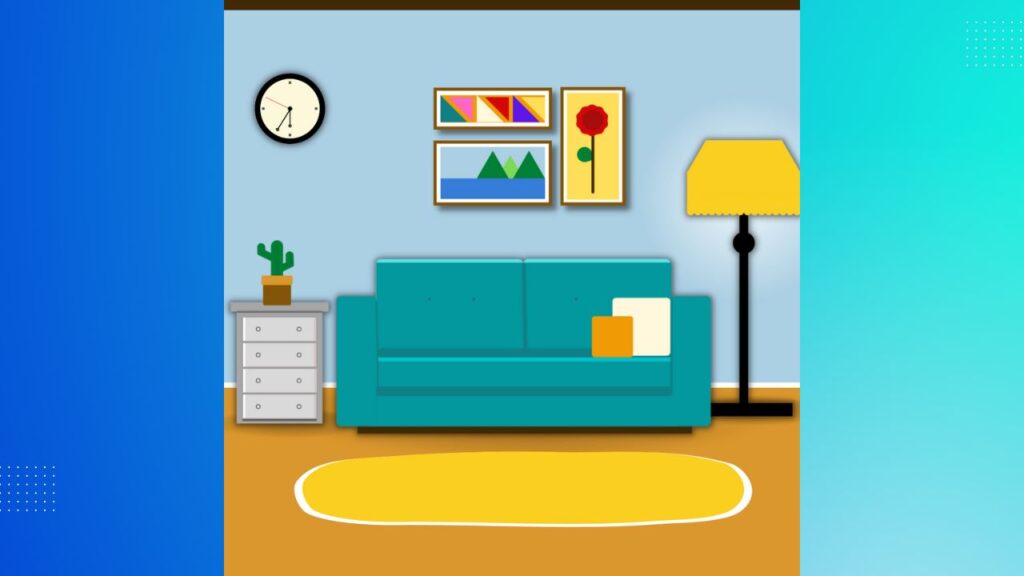Are you tired of feeling like you can’t live large because you’re living on a small housing budget?
Well, I’ve got some great news for you. You can have a luxurious and comfortable living space without breaking the bank.
According to a recent study, millennials are spending more on rent than any previous generation, with the average rent for a one-bedroom apartment being around $1,300 per month.
And with student loans, car payments, and other expenses, it can be challenging to make ends meet.
But don’t worry. With some creativity and strategic planning, you can have a spacious and stylish living space without spending a fortune.
In this article, I’m going to share with you some practical tips and tricks for living large on a small housing budget.
For living on a small housing budget, maximize energy efficiency, go for low-cost upgrades and renovations, and create a luxurious living space on a budget. Also, consider sustainable living practices and small-space gardening to save money and live more efficiently.
Trust me, I’ve been there. As a millennial myself, I understand the struggles of trying to balance a comfortable lifestyle with financial responsibility.
But with a little bit of effort, you can have both.
So, let’s dive in and discover some ways to make your home feel like a palace, even on a tight budget.
1. Making the Most of Small Living Spaces

One of the biggest challenges of living on a small housing budget is making the most of your limited living space.
But fear not, I’ve got some great tips for you on how to maximize your space and make your home feel more spacious and comfortable.
1.1 Choosing the Right Furniture
Let’s start with furniture.
When it comes to choosing the right furniture for your small space, there are two key things to keep in mind: affordability and space-saving design.
First, let’s talk about affordability. Did you know that the average American spends around $8,176 on furniture each year?
That’s a lot of money, especially if you’re on a tight budget. The good news is that you don’t have to break the bank to furnish your home.
There are plenty of affordable furniture options out there if you know where to look.
Here are a few tips for finding affordable furniture:
- Shop at thrift stores, consignment shops, and garage sales
- Look for furniture on online classifieds like Craigslist
- Check out discount furniture stores like IKEA and Wayfair
- Consider buying secondhand furniture and repurposing it
Now, let’s talk about space-saving design.
When you’re living in a small space, every inch counts. That’s why it’s essential to choose furniture that maximizes your space.
Here are a few tips for selecting pieces that will help you make the most of your space:
- Look for furniture that can serve multiple purposes, such as a sofa bed or storage ottoman
- Choose furniture that is proportional to the size of your room
- Opt for furniture with built-in storage, such as a platform bed with drawers
- Consider using modular furniture that can be easily moved and rearranged
By following these tips for choosing the right furniture, you can save money and make your small space feel more spacious and comfortable.
So, get out there and start furnishing your home without breaking the bank!
1.2 Utilizing Storage Solutions
When you’re living in a small space, storage can be a real challenge.
But with a little bit of creativity and some DIY skills, you can make the most of your space and keep your home organized.
Let’s start with some creative storage ideas. Did you know that clutter can cost you money?
According to a study, the average American spends around 2.5 days per year looking for lost items, and clutter can also lead to missed deadlines and forgotten appointments.
That’s why it’s important to find creative storage solutions to keep your home organized.
Here are a few ideas to get you started:
- Use vertical space with wall-mounted shelves and hooks
- Hang a pegboard for tools and supplies
- Use tension rods to create extra storage in closets
- Install floating shelves for books and decorative items
- Use baskets and bins to corral loose items
Now, let’s talk about some DIY storage solutions. Did you know that the average American spends around $1,800 per year on home improvements and repairs?
That’s a lot of money, especially if you’re on a tight budget.
But with some basic DIY skills, you can save money and create customized storage solutions for your home.
Here are a few ideas:
- Create a storage bench with built-in drawers
- Install a pull-out pantry in a narrow space
- Use PVC pipes to create a shoe rack
- Repurpose old drawers as under-bed storage
- Make a wall-mounted bike rack with old handlebars
By utilizing these creative storage ideas and DIY solutions, you can save money and make the most of your small living space.
So, get creative and start organizing your home like a pro!
1.3 Creating Multi-functional Spaces
In small living spaces, every square inch counts. That’s why it’s important to get creative and make the most of your space.
One way to do this is by creating multi-functional spaces. By combining different functions in one room, you can save space and make your home more functional.
Let’s start with making the most of every square inch. Did you know that the average American home has around 2,500 square feet of living space?
That’s a lot of space, but if you’re living in a small apartment, you might have only a fraction of that. That’s why it’s important to be smart with your space.
Here are a few ideas to get you started:
- Use a Murphy bed to free up floor space
- Use a storage ottoman as a coffee table
- Hang a folding table on the wall for extra workspace
- Use a bookshelf as a room divider
- Install floating shelves above the toilet for extra storage
Now, let’s talk about creating dual-purpose rooms. Did you know that the average American spends around 90% of their time indoors?
That’s a lot of time spent at home, so it’s important to make your home as comfortable and functional as possible. One way to do this is by creating dual-purpose rooms.
Here are a few ideas:
- Use a guest room as a home office
- Use a dining table as a workspace
- Use a sofa bed in the living room for guests
- Use a room divider to create a home gym
- Use a storage bench as a window seat
By creating multi-functional spaces, you can save money and make your small living space more functional.
So, get creative and start combining functions in your home!
2. Budget-Friendly Home Decor

2.1 Creative Ways to Decorate on a Budget
Who says you need to break the bank to have a stylish home? There are plenty of ways to decorate your space on a budget.
There are even ways to decorate using items you already have.
Let’s take a look at some creative ways to decorate on a budget.
First, let’s talk about finding low-cost decor. Did you know that the average American spends around $7,000 on furniture and decor each year?
That’s a lot of money!
But you don’t need to spend that much to have a stylish home.
Here are some ideas for finding affordable decor:
- Shop at thrift stores and garage sales
- Check out discount stores like HomeGoods and Ross
- Shop online at places like Amazon and Wayfair
- Use coupons and promo codes when shopping
- DIY decor using inexpensive materials
Next, let’s talk about decorating with items you already have.
Did you know that the average American household has over 300,000 items? That’s a lot of stuff!
But instead of cluttering your home, why not repurpose some of those items as decor?
Here are some ideas:
- Display your favorite books and magazines
- Use old jars and vases as flower vases
- Hang up family photos and artwork
- Use vintage suitcases as storage or decor
- Repurpose old furniture with a fresh coat of paint
By getting creative and thinking outside the box, you can decorate your home on a budget.
So, don’t be afraid to shop around for deals and get creative with the items you already have.
You might just be surprised at how stylish your home can look!
2.2 Upcycling and DIY Projects
When it comes to decorating your small living space, upcycling and DIY projects are great options for staying within a budget.
Upcycling involves repurposing old items, such as using mason jars as vases or turning an old ladder into a bookshelf.
Not only is this budget-friendly, but it’s also environmentally friendly.
DIY projects can be a fun way to create unique decor pieces without spending a lot of money.
You can make your own wall art using canvas and acrylic paints, or create your own throw pillows by sewing together old fabric scraps.
Pinterest and YouTube are great resources for finding inspiration and tutorials for upcycling and DIY projects.
You can even involve friends and family in these projects for a fun and collaborative experience.
By upcycling and taking on DIY projects, you can save money while creating personalized and unique decor pieces for your small living space.
3. Maximizing Energy Efficiency

3.1 Reducing Utility Bills
When you’re on a small housing budget, it’s important to be mindful of your utility costs.
Here are some tips for reducing those bills:
a. Saving on water usage
- Fix leaks promptly. A leaky faucet can waste up to 3,000 gallons of water per year.
- Take shorter showers. Cutting your shower time by just two minutes can save 10 gallons of water.
- Install a low-flow toilet. These use 1.6 gallons per flush, compared to the 3.5 gallons of older models.
b. Tips for reducing electricity costs
- Switch to LED light bulbs. They use up to 75% less energy than traditional bulbs and last up to 25 times longer.
- Unplug electronics when not in use. Even when turned off, they still draw power.
- Use a programmable thermostat to regulate your home’s temperature. This can save up to 10% on heating and cooling costs.
3.2 Sustainable Living Practices
When it comes to living large on a small housing budget, you can save money on your utility bills and also do your part in reducing your carbon footprint.
By implementing sustainable living practices, you can make a significant impact on the environment while also saving money in the long run.
Here are some tips to help you live sustainably and maximize energy efficiency:
a. Reducing carbon footprint
- Walk, bike, or use public transportation instead of driving a car.
- Buy locally-produced food to reduce transportation emissions.
- Choose energy-efficient appliances with an Energy Star rating.
- Use a programmable thermostat to reduce heating and cooling costs.
- Install a low-flow showerhead and faucet aerators to reduce water usage.
b. Eco-friendly living tips
- Use natural cleaning products instead of harsh chemicals.
- Plant a garden to produce your own fresh produce.
- Use cloth towels and napkins instead of paper products.
- Use reusable water bottles instead of single-use plastic bottles.
- Use LED light bulbs, which use less energy and last longer than traditional bulbs.
By implementing these sustainable living practices, you can reduce your carbon footprint and save money on your utility bills.
Plus, you’ll feel good about doing your part to help the environment.
4. Low-Cost Upgrades and Renovations

4.1 Affordable Home Upgrades
Let’s talk about some affordable home upgrades. It’s amazing how small changes can make a big impact on your home’s overall look and feel.
Plus, these ideas won’t break the bank!
First, consider adding a fresh coat of paint to your walls. This is a simple and affordable way to completely transform a room.
Did you know that painting your home’s interior walls can provide up to a 107% return on investment? That’s according to a study by HomeGain.
Another low-cost upgrade is updating your light fixtures. Swapping out outdated or unattractive light fixtures can give your home a modern look.
And, it doesn’t have to be expensive! You can find stylish light fixtures at affordable prices online or at home improvement stores.
Next, consider adding some plants to your living space. Not only do they improve air quality, but they also add a pop of color and a touch of nature to your home.
Plus, you can find plants at budget-friendly prices at your local nursery or home improvement store.
Lastly, consider replacing your old hardware with new knobs and handles. This is a simple upgrade that can make your cabinets and drawers look brand new.
Plus, you can find stylish and affordable hardware options online or at home improvement stores.
There you have it – some simple and affordable home upgrade ideas that can make a big impact.
With a little creativity and effort, you can transform your living space without breaking the bank!
4.2 DIY Renovation Projects
Tackling home renovations yourself can save you a ton of money on labor costs.
But before you start knocking down walls or tearing up your floors, make sure you have the proper tools and knowledge to complete the project safely and efficiently.
YouTube tutorials and online forums can be great resources for learning the necessary skills.
Some easy DIY renovation projects include painting cabinets or walls, installing new light fixtures or ceiling fans, and updating hardware like doorknobs or faucets.
Affordable renovation ideas can include things like replacing outdated countertops with a DIY concrete overlay or installing a peel-and-stick backsplash in your kitchen or bathroom.
You can also update your flooring with vinyl plank flooring, which is affordable and easy to install.
Another idea is to create a feature wall with a bold paint color or temporary wallpaper.
And don’t forget about curb appeal! Adding new landscaping or painting your front door can make a big impact without breaking the bank.
Did you know that according to a survey by the National Association of Home Builders, the most common home renovations among millennials include bathroom and kitchen remodeling, as well as outdoor living spaces?
With these affordable and easy DIY renovation projects, you can tackle those renovations and create the home of your dreams without breaking the bank.
5. Creating a Luxurious Living Space on a Budget

5.1 Adding Luxe Touches
Let’s talk about creating a luxurious living space on a budget.
We all want to feel like we’re living in a high-end space without breaking the bank.
One way to add luxe touches is by incorporating high-end elements on a budget.
For instance, you can create a focal point in your living room with an accent wall using peel-and-stick wallpaper or by adding molding and trim.
Adding new lighting fixtures can also create a big impact on a small budget.
Another way to add luxury on a budget is by finding affordable luxury items.
Did you know that you can find designer furniture at discounted prices at consignment shops or online retailers?
You can also add luxury by investing in quality bedding or accent pillows.
Here’s a list of some affordable luxury items you can consider:
- Faux fur throw blanket
- Decorative mirrors
- Art prints or photography
- Plush area rugs
- High-quality candles
- Unique decorative pieces
Remember, luxury is all about the feeling you get when you walk into a space.
You don’t have to spend a lot of money to create a luxurious living space.
With a bit of creativity and resourcefulness, you can elevate your living space and make it feel like a million bucks.
5.2 Creating a Cozy Atmosphere
A warm and inviting space can actually increase your happiness and reduce stress.
So, let’s get started with some tips for making your home feel cozy.
Firstly, consider adding some soft textiles to your space such as throw blankets, pillows, and rugs.
Not only do they add warmth, but they can also add texture and color to a room. Additionally, candles or diffusers can create a calming and inviting scent.
When it comes to furniture, consider adding some comfortable seating such as a plush armchair or sofa. This not only adds comfort but can also make your space feel more inviting and cozy.
Now, let’s talk about doing all of this on a budget.
One way to add a cozy touch to your home without spending too much money is by DIY-ing your decor. For example, you can make your own throw pillows or knit a cozy blanket.
You can also try thrift shopping for vintage or unique decor pieces at a lower cost.
Another budget-friendly tip is to repurpose items you already have in your home.
For example, you can use an old ladder as a bookshelf or a vintage suitcase as a side table. Get creative!
Remember, creating a cozy and luxurious living space doesn’t have to cost a fortune.
By adding soft textiles, comfortable seating, and doing some DIY projects, you can achieve a warm and inviting atmosphere in your home without breaking the bank.
6. Small Space Gardening

6.1 Tips for Gardening in Small Spaces
Let’s talk about small-space gardening.
It can be tough to find space for a garden when you’re living on a budget in a small apartment or house, but it’s definitely possible.
Here are some tips for gardening in small spaces:
Table: Tips for Gardening in Small Spaces
| Tip | Description |
| Container gardening | Use pots and containers to grow plants, herbs, and vegetables on your balcony, patio, or even indoors. You can find affordable containers at garden centers, hardware stores, or even thrift shops. |
| Vertical gardening | Use vertical space to grow plants by using hanging baskets or wall-mounted planters. You can even create a DIY trellis to support climbing plants like tomatoes or cucumbers. |
| Indoor gardening | If you don’t have an outdoor space, you can still grow plants indoors. Choose plants that thrive in low-light conditions, such as spider plants, pothos, or snake plants. You can also grow herbs like basil, cilantro, or mint on your kitchen windowsill. |
| Community gardens | If you don’t have any space at home, look for community gardens in your area. These are usually shared plots where you can grow your own vegetables and flowers for a small fee. |
Container gardening is a great option for small spaces because you can grow plants in pots and containers on your balcony, patio, or even indoors.
You can find affordable containers at garden centers, hardware stores, or even thrift shops.
Make sure to choose the right size container for your plant and use high-quality potting soil. You can grow herbs, vegetables, and even flowers in containers.
Indoor gardening is another option for small spaces.
You can grow plants indoors by choosing ones that thrive in low-light conditions, such as spider plants, pothos, or snake plants.
You can also grow herbs like basil, cilantro, or mint on your kitchen windowsill. Just make sure to give your plants enough water and sunlight, and watch out for pests.
Overall, small-space gardening is a great way to add some greenery to your home, even if you’re on a budget and have limited space.
Give it a try and see how much joy and satisfaction you can get from growing your own plants.
6.2 Affordable Ways to Start a Garden
First, let’s look at some tips for gardening in small spaces like apartments or small balconies.
- Container gardening ideas: Container gardening is a great way to utilize small spaces. You can grow plants in pots or containers, which can be placed on balconies, windowsills, or even on the floor. You can grow anything from herbs to vegetables in containers.
- Indoor gardening tips: You can also try indoor gardening if you have limited outdoor space. You can grow plants like herbs or microgreens on a windowsill or under a grow light.
Some affordable ways to start a garden.
- Seed saving and propagation: One of the best ways to save money on gardening is by saving seeds from your plants. You can also propagate plants from cuttings, which is a cost-effective way to grow new plants.
- Finding low-cost gardening supplies: You can find low-cost gardening supplies by shopping at discount stores, using recycled materials like plastic containers, or even using old furniture as planters. You can also look for free compost from local municipal composting programs.
With these tips, you can start gardening even if you have limited space and a tight budget.
Gardening is not only a great hobby but also a sustainable way to grow your own food and create a beautiful living space.
Bottom Line…
Thanks for sticking around until the end of this article on Living Large on a Small Housing Budget for Millennials.
I hope you found some valuable insights and ideas on how to live comfortably and stylishly without breaking the bank.
As we’ve discussed, living on a small housing budget doesn’t have to mean sacrificing style, comfort, or functionality.
With a little bit of creativity, resourcefulness, and strategic planning, you can transform your small living space into a luxurious and inviting haven.
We covered a lot of ground in this post, from maximizing energy efficiency and low-cost upgrades and renovations to creating a cozy atmosphere and small-space gardening.
And, of course, we talked about the importance of budgeting and smart financial planning when it comes to housing expenses.
Remember, according to a recent survey by Bankrate, housing costs are the largest budget item for most Americans, accounting for about 30% of the average household budget.
So, it’s crucial to be mindful of your spending and look for ways to cut costs without compromising on the quality of life.
I hope this post has inspired you to get creative, think outside the box, and embrace the possibilities of living large on a small housing budget.
With a bit of determination and some of the tips and ideas we’ve discussed, you can create a beautiful, functional, and comfortable home that reflects your unique style and personality.
Happy living!

1 thought on “Living Large on a Small Housing Budget for Millennials”